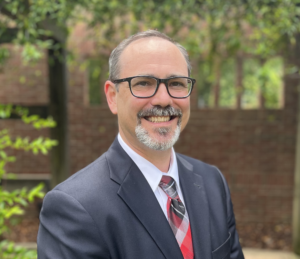
To mark the five-year anniversary of The Center for Truth in Science, we sat down with CEO Jacob Traverse for a recent interview. Below is an excerpt from that conversation.
Q: Why does The Center For Truth in Science exist?
A: Our guiding principle is crystal clear: We fight for truth and science for a more just and healthy world. That translates into commissioning rigorous compilations of existing research—systematic reviews and meta analysis—so that third parties, including lawyers, judges, policymakers, and the public, can make decisions based on robust science.
I tell people we exist in large part to prevent bad decisions—decisions rooted in questionable research methods, biased analysis, or inflated headlines. By identifying, funding, and disseminating independent research, we empower people to separate good science from bad science in everything from regulatory debates to claims of harm in the courtroom.

Q: What are systematic reviews and why are they important?
A: A systematic review is a rigorous, step-by-step assessment of all available evidence on a particular topic. It follows a predefined protocol—covering how studies will be searched, included, and assessed for quality—to minimize bias. The end result is a comprehensive, balanced view of what the research evidence we have available really shows. In today’s fast-paced media environment, single studies or sensational headlines can overshadow broader realities. A systematic review pulls together findings from currently available studies, evaluates the quality of the research methods used, and ensures that final conclusions aren’t swayed by confounders, bias or flawed methodologies. It offers decision-makers—from judges to legislators—more reliable, conclusive evidence.
Q: What does it actually take to produce a systematic review?
A: Doing good science is expensive—more than people realize. In order to assemble a qualified research team representing relevant fields of expertise we thoroughly review proposals with the help of outside subject-matter-experts. Following the Center making an award, the selected teams conduct their research independently and submit their findings to peer-reviewed journals for publishing and sharing their work publicly. Our most recent awards have reached six figures per project for completing this scale of collaborative work. The Center’s research grants do not factor in our own time or our investment in communication efforts to share the findings with legal professionals, legislators, scientists, and other stakeholders.
Q: How do you decide which issues to fund and study?
A: We look for emerging topics where our research methods can truly inform better decisions—particularly around questions of causation and risk that affect everyday lives. Before we embark on a new project, we ask: can our efforts meaningfully advance the conversation or help guide real-world outcomes? We also ask ourselves if there is enough evidence available to complete a systematic review, or to truly answer key questions about exposure, risk, and safety.
Q: Have you seen tangible impact from the Center’s work?
A: We have. Our systematic reviews have found their way into court cases and professional associations, putting credible evidence in front of the people who need it most. We’re always proud to see attorneys and judges referencing our studies instead of relying on sensational headlines, incomplete data, or over-reached interpretation of results. That’s the ultimate payoff of our approach: practical tools for decision-makers who want to do right using good science.

Q: What is your broader vision for the Center over the next five to ten years, and what would tangible success look like—both for the organization and for the broader public?
A: Over the next five years, we’re aiming for nothing short of transformative growth. We want a fully staffed and sustainably funded organization that can tackle multiple large-scale research projects every year—systematic reviews, issue analyses, and collaborative studies that lead to better decisions at the intersection of science, justice, and the economy. When people think of unbiased, rigorous scientific analysis—whether it’s a judge on the bench, a lawmaker debating policy, or a journalist covering a controversial topic—we want them to think of the Center for Truth in Science.
Ultimately, success means fewer decisions that impact Americans based on bad science—decisions driven by hype, bias, or incomplete evidence—and more outcomes grounded in rigorous, and transparent science. If the Center can consistently deliver credible, actionable information to those who need it most, we’ll have done our part to elevate the standard of evidence-based decision-making for years to come.
